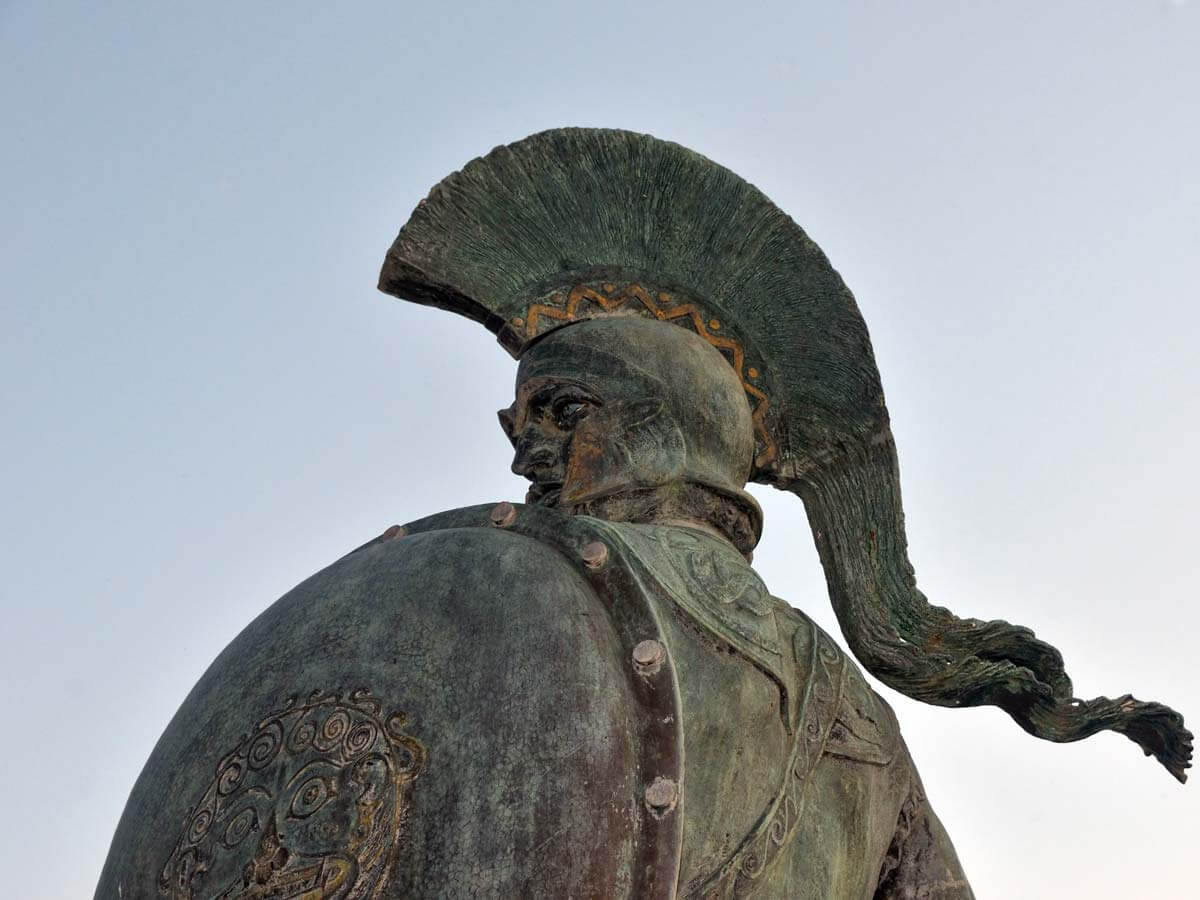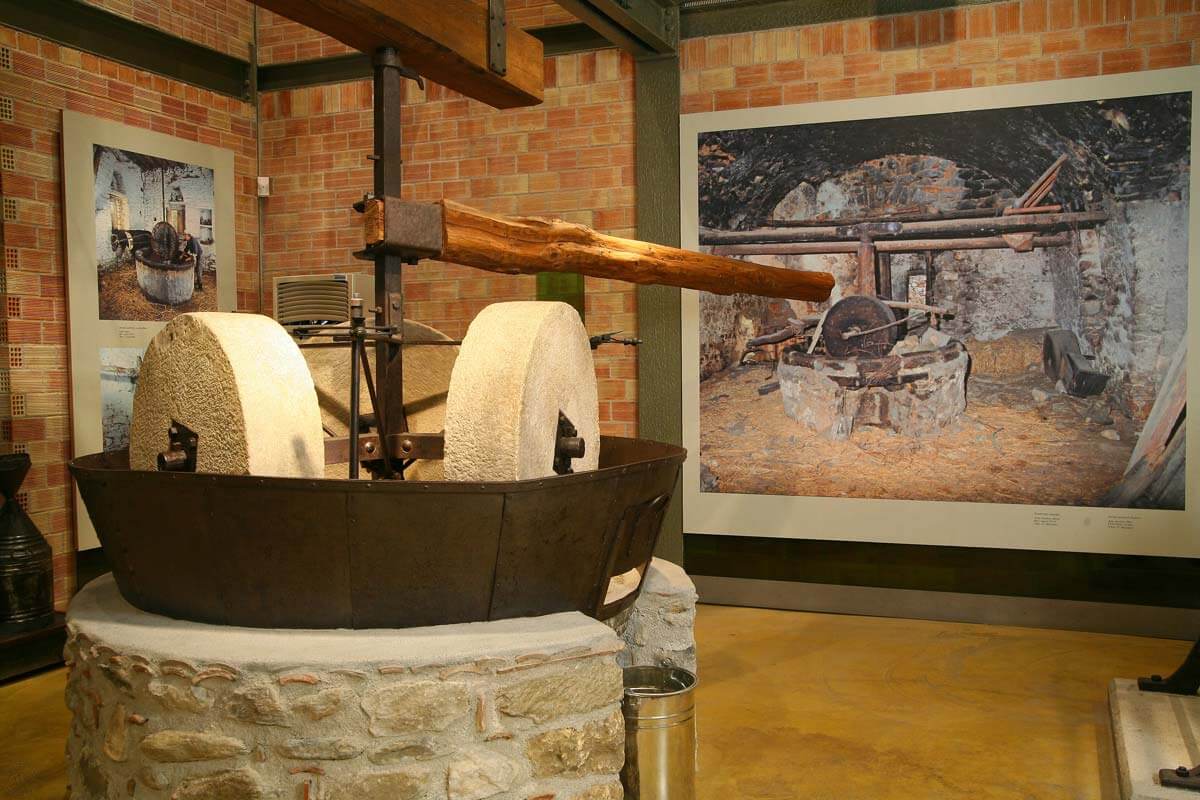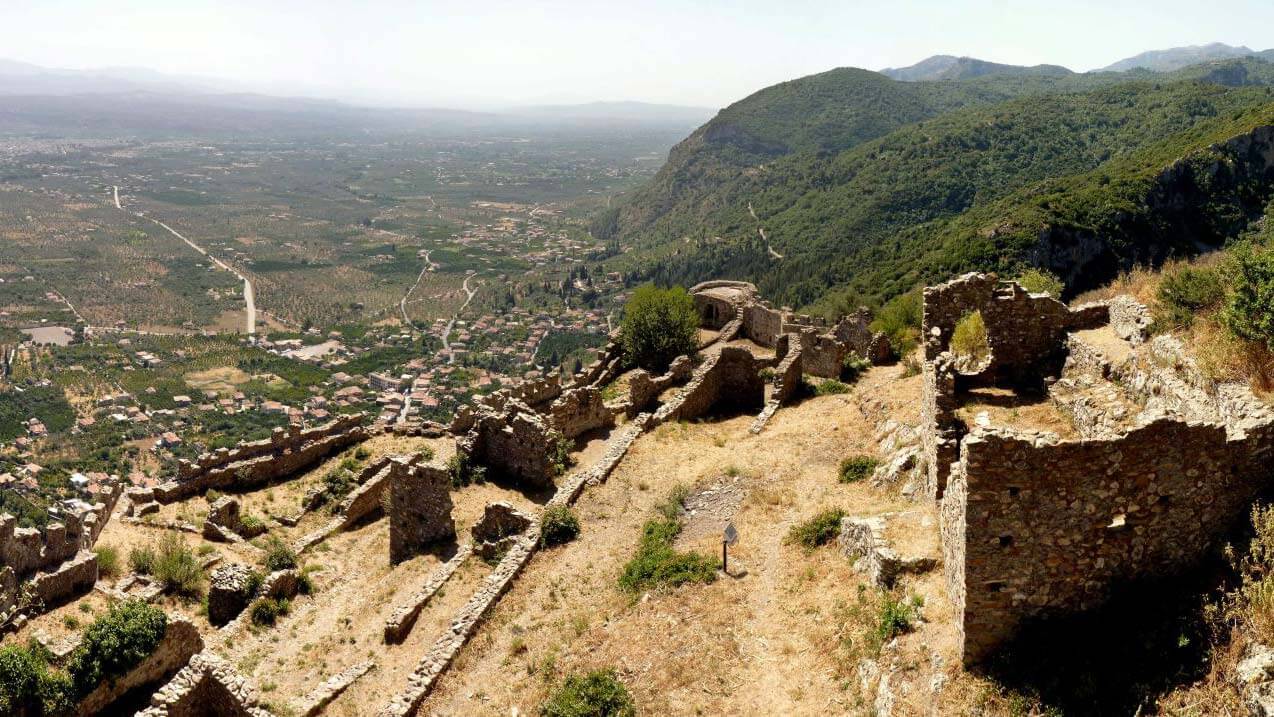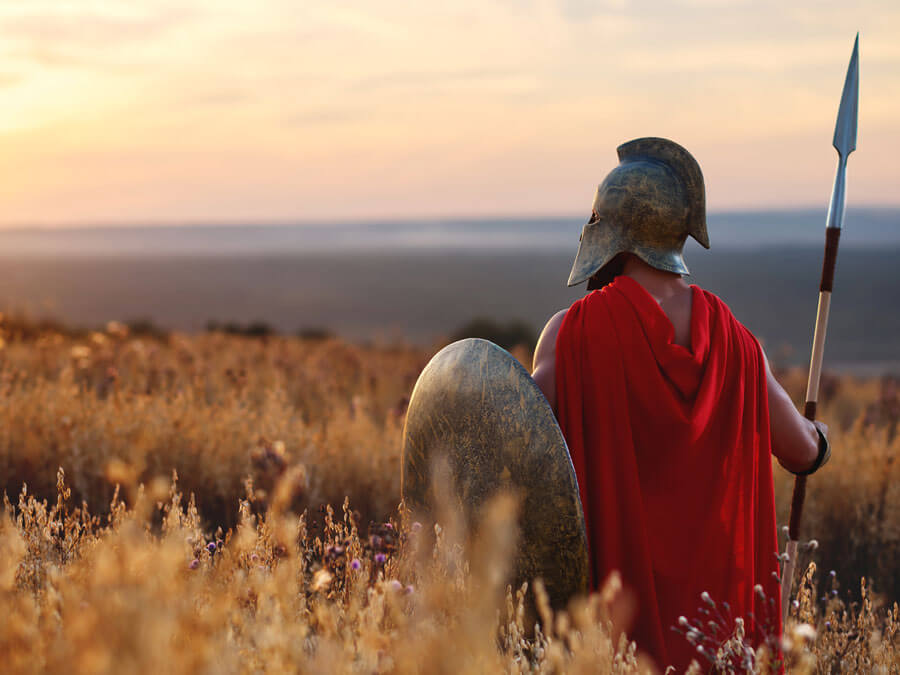1. The Archaeological Museum of Sparta
Start your exploration from the Archaeological Museum in the city center. Housed in a beautiful neoclassical building with a garden adorned with statues, it is the first Greek museum built in a provincial town to highlight the antiquities of the area. The Museum opens its doors and encourages visitors to admire rare exhibits from ancient and Roman times. The exhibits include sculptures, architectural members, sections of mosaic floors, ceramics, inscribed columns, figurines and votive clay masks. An exhibit that is definitely worth seeing is the bust of a ‘hoplite’ (a Spartan warrior), known as ‘Leonidas’ from the 5th century B.C.
![Credit: George E. Koronaios <a target='_blank' href='https://creativecommons.org/licenses/by-sa/4.0'>[CC BY-SA 4.0]</a> Statue of ‘Leonidas’ in the Archaeological Museum of Sparta](/images/Blog/Sparta%20things%20to%20do/Things_to_do_in_Sparta_Archaeological_Museum.jpg)
2. The statue of Leonidas
The most famous statue of the brave King may be in Thermopylae, but he could not be absent from his birthplace, could he now! Continuing your walk to the imposing Municipality Building you will find the trademark of Sparta, the statue of Leonidas, which stands haughtily on the most central street of the city. The majestic and impressive statue of the king of Sparta was placed there in 1969 and is probably the most photographed landmark in the city.

3. The Tomb of Leonidas
When moving north of the city, you will find yourselves admiring the Tomb of Leonidas or "Leonideion", a temple-shaped building of antiquity where according to tradition the bones of the legendary king Leonidas were transported. Although there is no indication of the association of the temple with the legendary king of Sparta, both the local tradition and the traveler Pausanias, express the view that the bones of Leonidas were transported and buried there from Thermopylae. Thus, the monument was identified in the popular consciousness with the tomb of Leonidas. Pausanias also mentions that the tomb was located west of the market, opposite the theater, and that games were held here every year!
![Credit: Tomisti <a target='_blank' href='https://creativecommons.org/licenses/by-sa/4.0'>[CC BY-SA 4.0]</a> The tomb of Leonidas in Sparta](/images/Blog/Sparta%20things%20to%20do/The_Tomb_of_Leonidas_in_Sparta.jpg)
4. Museum of Olive and Greek Olive Oil
Also noteworthy is the Museum of Olive and Greek Olive Oil, located in the city center which is open all year round. It offers you the opportunity to see the very first testimonies about the presence of the olive tree and the production of olive oil in Greece. For each historical period, you will discover the contribution of the olive and olive oil to the economy and to everyday life: nutrition, body care, but also now outdated uses, such as lighting. You will also see how the olive acquires a symbolic dimension in the mythology, religion, manners and customs of the Greeks.

5. The Acropolis of Sparta
The view from the top of the Acropolis is amazing: on one hand is the city of Sparta and on the other the imposing mountain Taygetus. You will find yourself lost in the past admiring the ancient theater, a sight that leaves you with a sense of presence and connection with the ancient Spartan society. Continuing, on the edge of the city, is the Sanctuary of Artemis Orthia, one of the most important sanctuaries of ancient Sparta, which is built near the banks of the river Evrotas. It was the religious center of the famous Spartan education.
![Credit: George E. Koronaios [CC0] The ruins of the ancient theatre of Sparta](/images/Blog/Sparta%20things%20to%20do/Runis_of_Ancient_Theater_of_Sparta.jpg)
The above suggestions are the top things to do and not to miss in Sparta. But modern Sparta is more than its historical past and to make your experience complete, there are many more things to do and see.
6. The modern city of Sparta
The main square is a meeting point for residents and visitors and should be your starting point as well. In the morning, students and locals take walks, shop in the surrounding shops, drink their coffee or eat their lunch, or go to work, while at night the square has several options for drinks, cocktails and delicious food that will amaze you! Stroll around the alleys of the city and breath in the local vibes of this modern, fast-paced city.

7. Τhe extraordinary Mystras
Located just 5km away from Sparta’s city center, you will find Mystras, a UNESCO World Heritage Site. It is a must-visit and among the top things to do and see when visiting Sparta. Mystras, the ‘wonder of the Morea’, was a settlement built like an amphitheater on the hill, forging a fortress. You can enjoy a walk in the ruins of this medieval village, passing through the cobbled alleys with the fragrant gardens, the Byzantine churches, the Roman baths, and the stone fountains. If you visit during Spring, you can attend carnival events, such as the Crokee Carnival, and taste fasting food in the village of Mystras, accompanied by a bonfire and the flying of kites and balloons! From the 26th of August to the 2nd of September, a trade fair takes place in the settlement of Mystras, where visitors can buy traditional products, delicacies and clothes from Greek handicrafts at affordable prices.
![Credit: Ronny Siegel <a target='_blank' href='https://creativecommons.org/licenses/by/3.0'>[CC BY 3.0]</a> The Metropolis of Mystras Castle](/images/Blog/Sparta%20things%20to%20do/Things_to_see_in_Sparta_Mystras.jpg)
8. Taygetus Mountain
Time to get away from the city and explore the surrounding nature of Sparta and of course the mountain of Taygetus. Walk the idyllic paths of Taygetus, discover villages hidden behind dense forests and try local cuisine in taverns and restaurants. Some of the highlights of the South Taygetus is its fantastic gorge, which is part of the Natura 2000 network, the wonderful villages of Arna, Koumousta and Xirokambi, the only bridge of antiquity that has survived to this day, and the famous Monastery of Gola, with its frescoes of ancient Greek philosophers. North Taygetus is quite uncharted. It consists of the wilder part, with the beautiful valley of Kastora, the homonymous river and its impressive bridge, the villages of Kastori, Pellana, Georgitsi and Loganiko, and the Palace of Menelaus and Helen of Troy.
![Credit: Herbert Ortner <a target='_blank' href='https://creativecommons.org/licenses/by/3.0'>[CC BY 3.0]</a> Taygetus Mountain](/images/Blog/Sparta%20things%20to%20do/Taygetus_mountain_near_Sparta.jpg)
Other tips and things to do in Sparta
For the mountain: Visit the Magganiari Spring and take time to enjoy this little wonder of nature.
For the city: On Saturdays, the public market of the city is a pole of attraction and one of the best sources to buy organic vegetables and herbs from the Taygetus and Parnonas mountains. During summer, the Cultural Summer festival, organized at the Sainopouleio Amphitheater, gives you the opportunity to watch a show, a play, or a concert during your stay in the city.
You may also like:
About the author: Our team at Greek TravelTellers consists of academics and lovers of Greek culture. Our vision is to convey our knowledge and Greek values through unique tours and experiences. Through our blog, we hope to bring Greek history and culture closer to you. Feel free to learn more about us.




